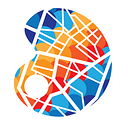Can Collaboration Tools Actually Help Build Better Teams?
If you know us at Emotive Brand, you know we love a healthy dose of post-work cocktails, a Friday spent hiking as a team, or the occasional holiday extravaganza. We can genuinely say we enjoy spending time with each other. Even so, we would be lying if we said productive collaboration always came naturally.
Like any business, we run into communication issues. We question whether we have the right people in the right roles on the right projects. Some of us work best in short bursts, others need longer spans of time to be productive. Some love structure, others, room to breath and create. In short, we’re all different (which is great) — but sometimes, our different preferences, approaches, and paces, can make collaboration more difficult. It’s just natural.
However, as a highly collaborative agency in a highly collaborative business, we would be wrong to push aside these challenges. So, this week, we put aside an afternoon to invest in a different kind of team building.
Using Tools to Assess How We Collaborate
There are a lot of different collaboration assessments and tools out there. The one we did — Compass, by Shirlaws — hones in on workplace communication, leadership styles, and work pace. In short, the assessment told us four things about ourselves.
- Communication style: This assessment categorized each individual as either Think, Feel, or Know to better understand how each of us processes information. Reductively, thinkers are those who thrive on details — think data, facts, logic. Feelers process information through emotions and energies. Knowers trust their gut instinct — they’re intuitive and direct. We all are some combination of Think, Feel, Know — we may just lean into one or two more.
- Business role: This assessment told us if we operated as an entrepreneur (all about ideas, innovation, the future), a leader (all about tomorrow, strategy, change), or a manager (someone who makes sure what needs to happen today happens). Any business thrives when it has a spread of all three.
- Pace: This was all about how fast each of us moves through work, life, and leisure. It revealed if our work pace differed from our natural pace and explained what any gaps might indicate.
- Appetite for risk: This showed us where we sat on the spectrum of risk taking.
Once we had our results, the Compass team came into our office and facilitated a workshop for us to better understand these assessments and leverage them as tools for better collaboration.
We learned a lot that might be helpful — whether you’ve taken Compass, a like-minded test, or nothing like it yet.
Everyone has unique strengths. The question is: how do you leverage them?
One of the great things the Compass team explained right away was that there were no perfect results. Being a thinker is no better than being a feeler. Working fast is no better than working slow. Naturally innovating is no better than being an incredible manager. There are advantages to all of the above. And, the fact that all of us were different made us stronger as a team.
Once you recognize our teammate’s strengths, you can apply them to the way you build teams, engage with clients, and work with each other. For example, say Madeline (hypothetical person A) is a Think. When you have a client who needs data and details to get on board with an idea, Madeline is your girl. Theo (hypothetical person B), on the other hand, is a Feel. He’s a great storyteller and can read a room like a pro. He might be the perfect person for a pitch. Need someone to read a brief fast and report on what they conjecture is the core problem that needs to be solved? Call up your highest Know.
Empathy is everything, as always.
In the same way you can transform a business through empathy, you can transform a team through empathy. Much of the value of these assessments is the respect that comes with acknowledging that we don’t all approach or process things in the same way. Understanding that people come at work from different angles and accommodating or flexing to what people need to be successful can mean a lot. It can fuel more productive collaboration and better decision making.
If you surprise someone who needs time to look at the details with an impromptu meeting, understand that this isn’t optimal for their way of processing information. Try to give them a bit of warning next time, or explain the urgency of this particular situation. Similarly, before you jump into the details with someone who processes through emotion, try to take a step back and just ask them how their day is. It’s little things like this that can help build a better functioning team.
We are malleable, flexible, and always growing.
These assessments should never set you in stone. Some of our teammates had taken the Compass test a couple years ago and gotten different results (some changed more than others.) Shirlaws explained that these results can be affected by lots of things — what projects you’re on, how fast business is growing, how new you are, what your teammates are focused on, and even, what’s going on at home.
People are capable of growing into different roles and expanding into different communication styles. It’s important to assess where you are now, why you might have landed there, and how you can might strengthen, grow, and shift. We all assume different roles at different points of our lives — that’s what makes it interesting. So don’t put yourself or your teammates in a box. Challenge each other, ask questions, and try out different roles and approaches to communication. Try noticing what you don’t usually or attempt to approach an assignment from a different angle.
Good communication takes work and time.
Figuring out how to communicate and work with people doesn’t always come overnight. It takes patience, openness, and often, real effort. Giving yourself and your teammates the time to learn and practice good collaboration is essential. Read up on best behaviors or just simply ask your teammates what works best. And make sure you voice appreciation for when engagements do go right. Emails like “thanks for warning me in advance” or “thanks for helping me connect the dots” can go a long way. Celebrate what you do well as a team and learn from specific situations that may go amiss.
Power Team, Off to Practice
Even since our Compass workshop, I’ve noticed a lot more “How are you today?” questions and advance calendar invites. We’re already talking about building optimal teams fit to our clients’ needs and preferences. We’re considering the kind of strengths we need to consider when recruiting and growing our teams. We’re just getting started but I won’t be surprised if we find our team performing better, collaborating more effectively, making decisions faster, and connecting with our clients more meaningfully. As always, we will keep you posted.
If you want to learn more about how Compass can help your team, explore here.
Emotive Brand is a San Francisco brand strategy and design agency.
Originally published at www.emotivebrand.com on September 20, 2018.

